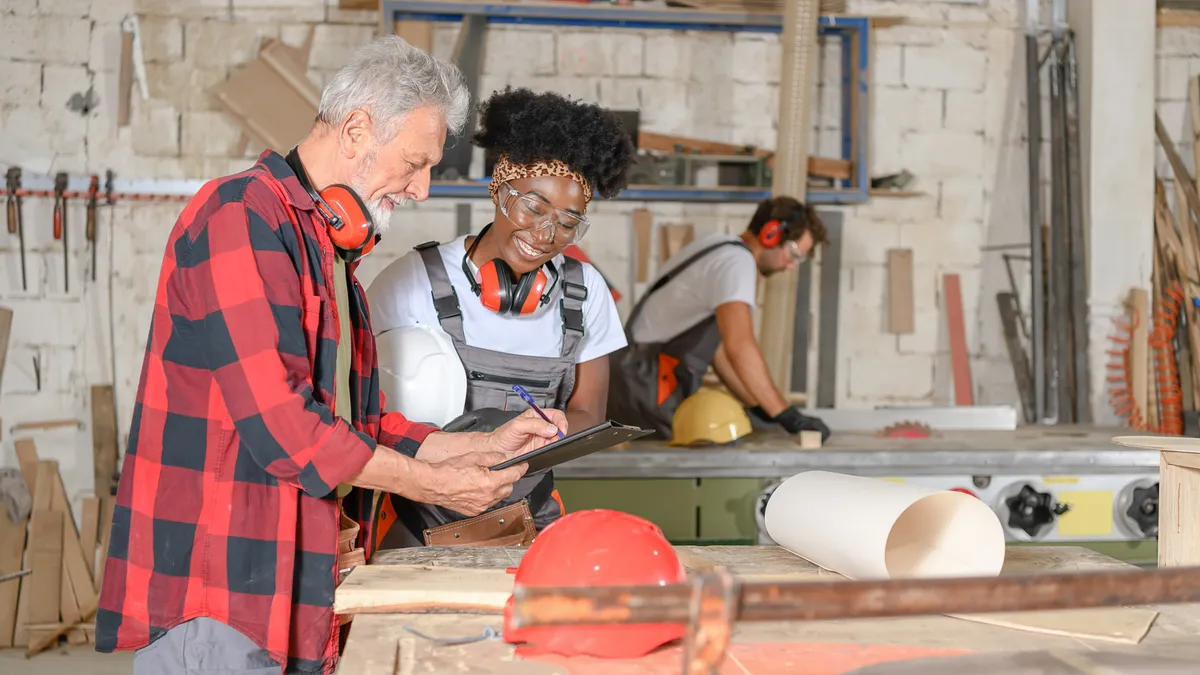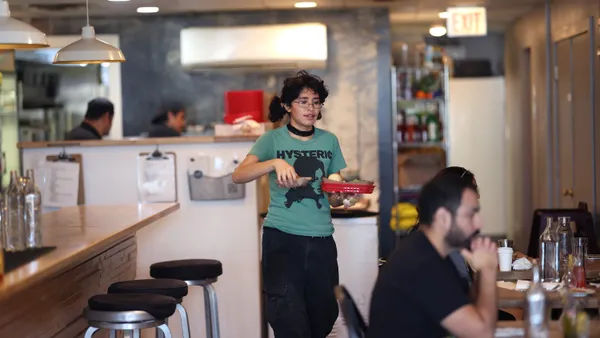Dive Brief:
- Despite a still-hot labor market and rebounds by groups that typically face employment barriers, some — particularly African American workers, teens, workers with disabilities and older workers — are not recovering from pandemic-related job losses, a ZipRecruiter report released Sept. 28 shows. Older women and older women of color have been hit especially hard, according to the report.
- The primary cause is not voluntary retirement, ZipRecruiter found. Rather, many older workers were pushed into involuntary retirement when they lost or left jobs due to plant or company closing or relocations, insufficient work or layoffs, according to the report.
- Older workers aren’t rebounding for several reasons, the report concluded. For one, employers may overlook older workers in industries with very young employee bases, assuming they would not be a good fit. Additionally, the job search has moved online, but many older workers have not. Age discrimination plays a role, too, the report said, as does a crisis of confidence over finding a job they’ll like or that pays more than their most recent job.
Dive Insight:
Many retirees say they want to return to work. One in 5 who responded to a Resume Builder poll from March said they were likely to head back this year. Although the driving force may be rising costs, about half of the responding retirees indicated they were enthusiastic about doing so.
So why aren’t older workers bouncing back? Julia Pollak, ZipRecruiter’s chief economist, identified a number of reasons. “The median age of employees range from 26 in shoe stores to 50 in libraries,” Pollak explained in an email to HR Dive. When staff happens to be, for example, predominately young, or female, or from a particular group, “employers tend to hire new employees with a similar profile,” she said.
Employers do this because they value culture fit and harmony among employees and consider employee referrals important, Pollak noted. She pointed to another problem familiar to DEI experts: Supervisors are involved with hiring decisions and often are biased toward candidates like themselves. One DEI source previously told HR Dive that employers lose candidates at the interview stage due to a lack of interviewers who look like them.
Ageism is an additional barrier. Older workers say they encounter age bias more often during the job search, particularly during screening interviews and in final hire decisions, than in the workplace, according to a 2021 survey by WerkLabs.
HR departments have several key levers they can pull to change this, Pollak said. “They’re responsible for bringing candidates to the top of the funnel,” she explained. They can increase the applications they shortlist, post positions on job boards dedicated to older workers and attend virtual job fairs for AARP members, veterans, and the like.
In addition, HR can educate hiring managers about the opportunities older workers present, Pollak said. For example, older workers bring a variety of valuable skills and knowledge, including a specialized understanding of their industry and soft skills such as empathy, critical thinking and relationship-building, HR Dive has reported.
HR can also train managers to recognize their biases, establish more objective selection criteria and help design skills assessments that test for the kinds of skills identified as most important for the role, Pollak added.
Businesses also can adopt strategies such as older worker recruitment programs and retraining programs to keep midlife and older workers current with new technologies and emerging business needs, ZipRecruiter suggests.
Employers should be recruiting across diverse age groups and should consider all applicants equally, regardless of age, the hiring platform reminded businesses. But for companies open to bringing in older workers, experience proves the practice benefits everyone. Several told ZipRecruiter that “they saw retention and professionalism of their employees rise when they experimented with hiring older employees,” Pollak noted.












